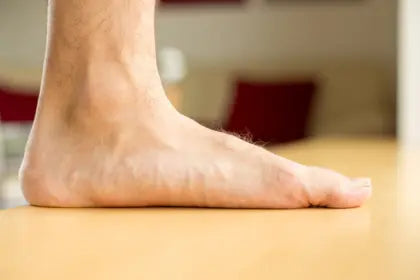
Why Arch Support Insoles Are Important for People with Flat Feet
Share
Flat feet, medically known as pes planus, is a condition characterized by a low or absent medial longitudinal arch. This anatomical variation can lead to a myriad of biomechanical alterations during gait, potentially resulting in discomfort, pain, and even injury. The medial longitudinal arch plays a crucial role in the foot's ability to absorb and distribute ground reaction forces, providing both flexibility and stability during the stance phase of walking.
The Prevalence and Etiology of Flat Feet
Approximately 25% of the American population is affected by flat feet, with etiologies ranging from genetic predisposition to acquired factors such as injury, obesity, and systemic diseases like rheumatoid arthritis and diabetes. Understanding the cause of flat feet is essential for determining the most appropriate treatment strategy.
The Biomechanics of Walking with Flat Feet
During normal gait, the foot undergoes a complex series of pronation and supination movements, which are facilitated by the arches. In individuals with flat foot, the absence of a well-defined medial longitudinal arch can lead to excessive pronation. This, in turn, can cause the tibia to rotate inward, potentially leading to knee, hip, and lower back pain.
The Role of Arch Support Insoles
Arch support insoles are designed to provide the necessary support to the medial longitudinal arch, thereby reducing excessive pronation and its associated biomechanical consequences. These insoles can be particularly beneficial for individuals with rigid flat feet, where the arch is absent both when weight-bearing and non-weight-bearing, and for those with flexible flat feet, where an arch is present when non-weight-bearing.
Types of Arch Support Insoles
There are various types of arch support insoles available, ranging from over-the-counter options to custom-made orthotics. Over-the-counter insoles are typically made from materials such as ethylene-vinyl acetate (EVA), which provide a balance between cushioning and support. Custom orthotics, on the other hand, are molded to the individual's foot and can offer a higher degree of support and correction. However, they all flatten unlike PerseveranX insoles which means they won't have the cushioning and support over time or even between each step.
The Importance of Proper Fitting and Material
Selecting the correct size and type of insole is critical for ensuring comfort and efficacy. Insoles that are too small or too large can lead to further biomechanical abnormalities, while those made from inappropriate materials may not provide the necessary support.
Exercises and Stretches for Flat Foot
In addition to wearing arch support insoles, individuals with flat feet can benefit from specific exercises and stretches designed to strengthen the intrinsic foot muscles and stretch the Achilles tendon and calf muscles. These include foot doming exercises, heel raises, Achilles tendon stretches, and calf muscle stretches.
Conclusion
The use of arch support insoles is a fundamental component of the management strategy for individuals with pes planus. By providing the necessary support to the medial longitudinal arch, these insoles can help to alleviate pain, reduce the risk of injury, and improve overall gait efficiency. It is important, however, to combine the use of insoles with appropriate exercises and stretches for a comprehensive approach to foot health.
